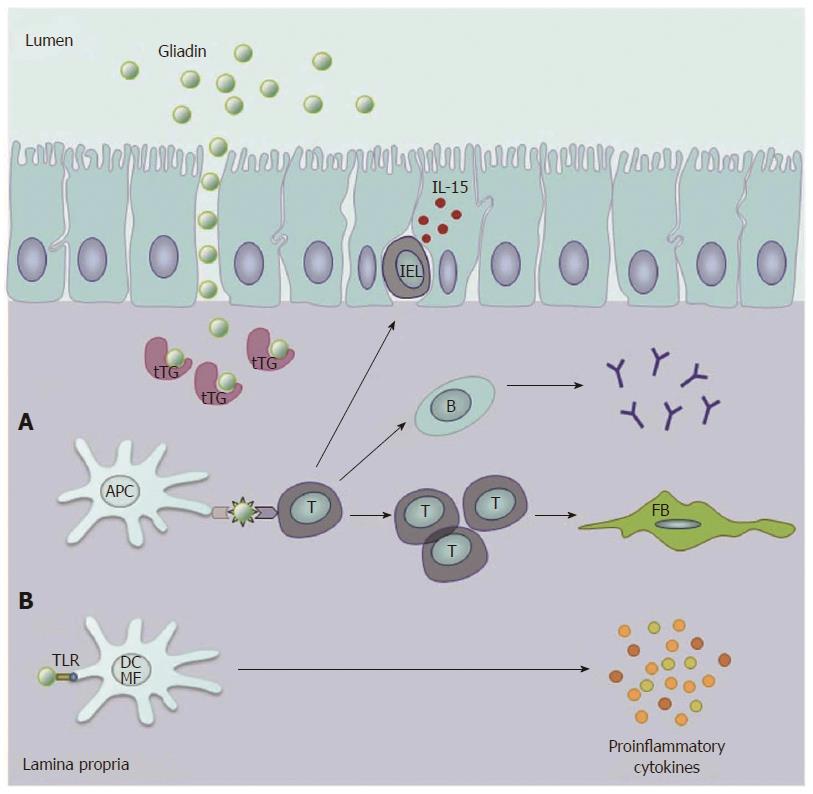Copyright
©2014 Baishideng Publishing Group Inc.
World J Gastroenterol. Jun 7, 2014; 20(21): 6495-6503
Published online Jun 7, 2014. doi: 10.3748/wjg.v20.i21.6495
Published online Jun 7, 2014. doi: 10.3748/wjg.v20.i21.6495
Figure 1 Key processes during the pathogenesis of coeliac disease.
In the lamina propria. A: Gluten-derived gliadin peptides deamidated by tissue transglutaminase (tTG) are presented to T-cells by antigen presenting cells (APC). This process leads to the activation of anti-gliadin and anti-tTG antibody producing B-cells and other T-cells promoting the activation of intestinal fibroblasts (FB). Furthermore, gliadin enhances the production of IL-15, which activates intraepithelial T lymphocytes (IEL); B: Gliadin peptides can directly activate Toll-like receptor (TLR) 2 and 4 on macrophages (MF) and dendritic cells (DC), resulting in increased production of proinflammatory cytokines (Reproduced with permission from Sziksz et al[1]).
- Citation: Sziksz E, Pap D, Veres G, Fekete A, Tulassay T, Vannay &. Involvement of heat shock proteins in gluten-sensitive enteropathy. World J Gastroenterol 2014; 20(21): 6495-6503
- URL: https://www.wjgnet.com/1007-9327/full/v20/i21/6495.htm
- DOI: https://dx.doi.org/10.3748/wjg.v20.i21.6495









